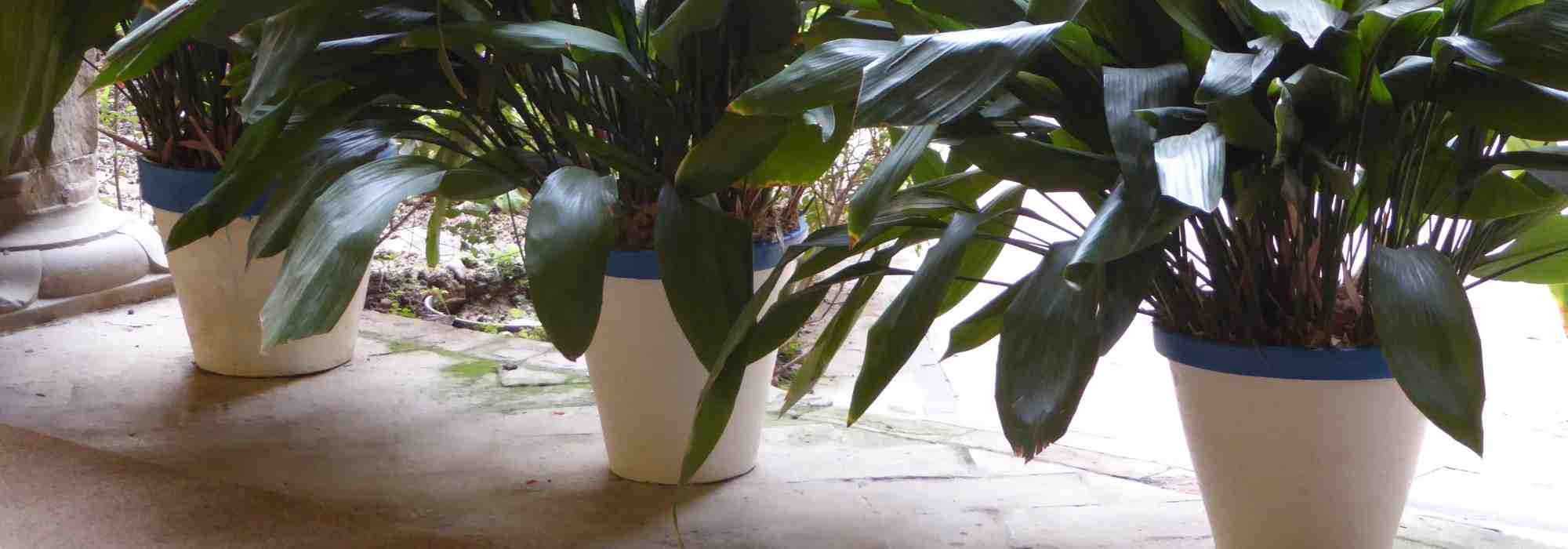
Plastic, biodegradable or terracotta pot…
Advantages and disadvantages of all types of pots
Contents
If there’s one thing a gardener cannot do without, it’s containers for plants. Whether for young plants, sowings, cuttings or simply to accommodate plants that cannot be planted in open ground, pots are essential. And it’s even more true if you are not fortunate enough to have a garden: growing in containers is then the only solution. Pots come in all sorts: large, small, colourful, more sober… But above all, pots, troughs or planters are not all made from the same material: from traditional terracotta to economical plastic pots, through wood troughs or zinc pots. Let’s look at the advantages and disadvantages of each type of pot.
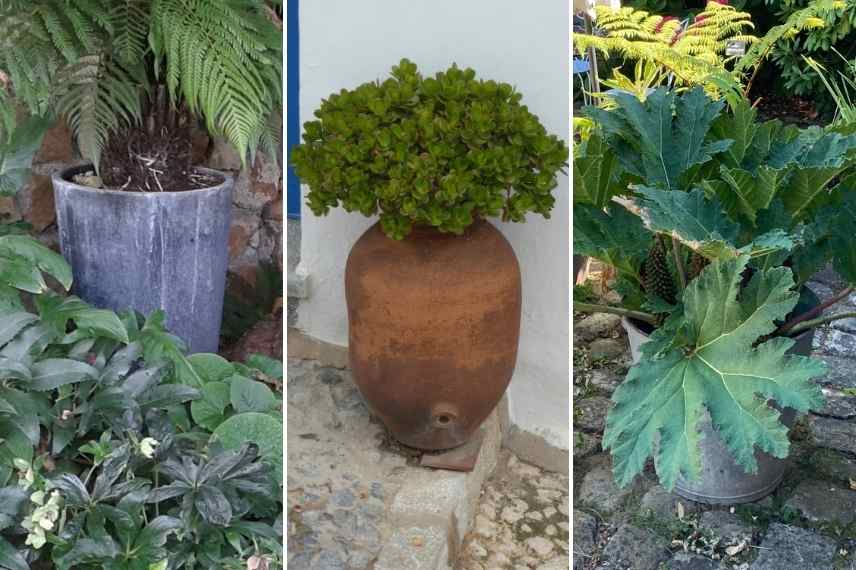
Concrete, terracotta, zinc… Different materials create very different atmospheres (Photos: Gwenaëlle David Authier)
Terracotta pots
Terracotta pots are made from moulded clay then “fired” at high temperature. This process hardens and permanently sets the clay.
Advantages
- Better thermal exchange : terracotta pots can add a few degrees to the rootball in winter and help regulate heat a little in summer ;
- Better water regulation : terracotta is permeable to water, which helps provide good drainage at roots (but don’t forget drainage hole(s) at bottom of pot!). However, terracotta tends to retain water and then “give it back” to the plant when rootball begins to dry. Bear in mind, though, that a plant in a terracotta container will need watering more often than one in plastic, for example ;
- Better gas exchange between inside and outside : air can circulate through the wall. Rootball thus always aerated but… some micro-organisms can also cross this barrier, which can be problematic for cuttings or young sowings. Beware! Glazed terracotta pots are no longer porous !
- Quite attractive nevertheless : even most basic terracotta pot remains decorative, especially if it develops a pleasing patina over time.
Disadvantages
- Heavy : inevitably heavier than plastic, weight of terracotta containers can sometimes be an issue for large volumes, especially for planters. However, it’s also an advantage as plant won’t topple in strong gusts ;
- Fragile : relative but… if you strike it with a hammer or drop it from height, chances are you’ll end up with only a few shards of pot. Moreover, depending on terracotta quality, some containers can crack under frost (water contained in terracotta expands when frozen). Fortunately, you can recycle these fragments as drainage material for other pots ;
- Costly : prices range from around one euro for smallest containers (15 cm diameter) to… several hundred euros for very large pots able to accommodate a small tree or a bush.
Terracotta pots are suitable for all types of plants to be grown over several years (perennials, bushes…) or as annuals. They should be avoided for cuttings or young plants, as well as for plants requiring lots of water such as carnivorous or tropical plants. Available in all sizes, qualities and finishes.
Did you know? To check whether plant in terracotta pot needs water, simply tap pot with finger. If it sounds hollow, water it ; otherwise, refrain !
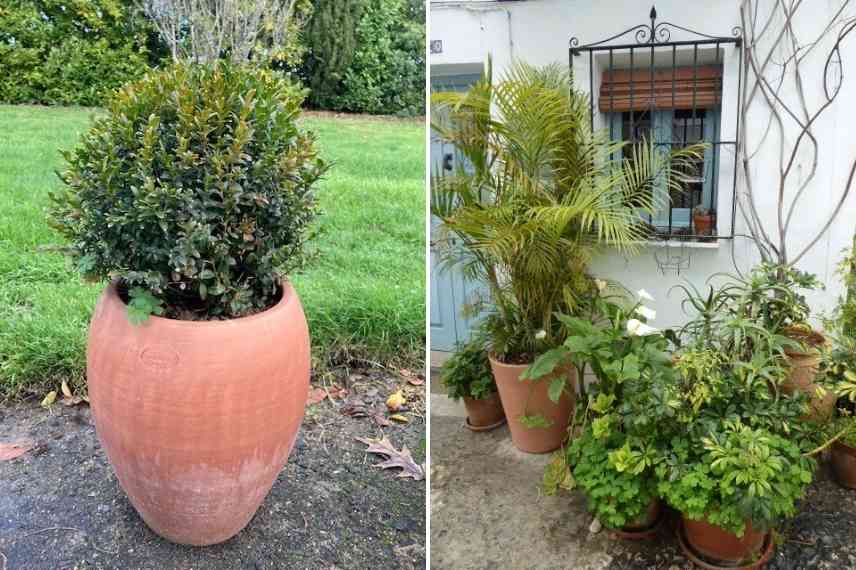
Terracotta pots lend themselves to many types of plants, pruned, exotic, perennials… (Photos : Gwenaëlle David)
Plastic pots
Plastic pots are most commonly made from polypropylene, a resistant, elastic and largely recyclable polymerous material.
Advantages
- Economical: much cheaper than terracotta pots of equivalent volume, a factor to consider if you have many plants to grow in pots;
- Lightweight: plastic pots are easier to handle than terracotta pots. However, this quality can become a drawback because this type of container is much less stable;
- Easy to clean: a wipe with a damp sponge and job’s done;
- Very resistant to frost: regardless of plastic quality, your pots will withstand winter hardships without problems;
- Retains moisture and heat: plastic does not allow thermal or water exchange so water stays longer and heat remains constant during season. But… on the other hand, watch out for overwatering and beware in summer as temperatures can rise very high and conversely in winter as temperatures can fall very low;
- Perfectly airtight container: no gas exchange can occur. On one hand this prevents certain diseases but on the other, the root system is not aerated and can suffocate.
In short, as you will have gathered, advantages of plastic pots are not always so… It depends on how you use them.
Drawbacks
- Sensitive to UV: pot gradually discolours with prolonged sun exposure, in some cases weakening the pot;
- Not very aesthetic… or maybe not: some are ugly from day one, others will fade with time. But increasingly, garden centre shelves show plastic pots that are both more UV-resistant and available in all colours and textures. In short, let’s not categorically reject this type of container based solely on the simple black plastic bucket.
Plastic pots are best used for sowing and cuttings, for tropical plants and carnivorous plants. Here too, they come in all sizes, qualities and finishes.
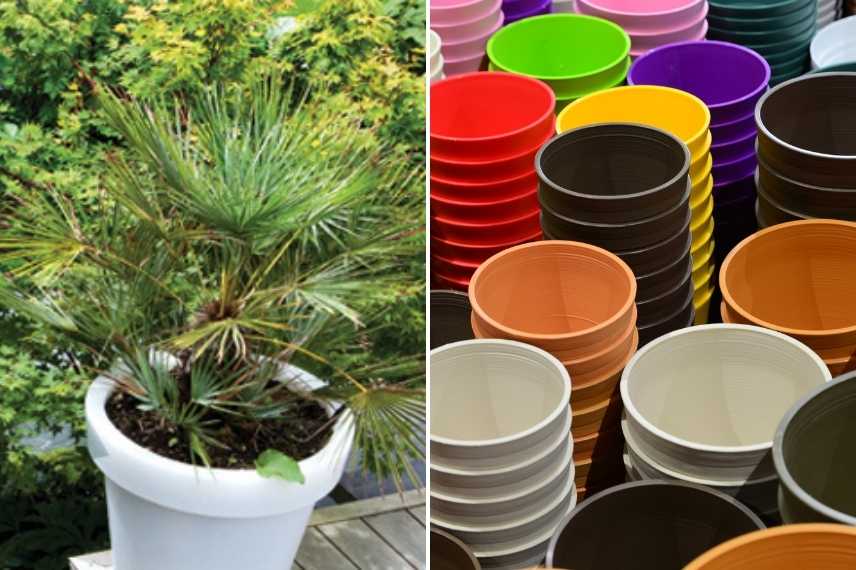
→ Retrouvez all our plastic containers in our online nursery.
Discover other Conventional seedling pots
View all →Available in 1 sizes
Available in 3 sizes
Available in 6 sizes
Available in 7 sizes
Available in 2 sizes
Pots made from biodegradable materials
Plastic will become waste in the long term, even if part of it is recovered for recycling, and clay used to make terracotta pots is not an inexhaustible resource (in addition to destruction of ecosystem at clay quarry sites). In other words, it is urgent to turn to more environmentally friendly containers.
Some pots are made from recycled materials and even from biodegradable and/or compostable materials. They can be found in turf, maize starch or potato starch, plant fibres… Theoretical advantage is that pots disappear after some time. Moreover, for plant-fibre pots, root-binding cannot occur because roots pass through pot wall. Two major drawbacks of turf and plant-fibre pots are they do not retain moisture and dry out quickly.
However, latest innovations have enabled creation of plant-fibre pots bound with plant-based binders whose durability is almost equivalent to a plastic pot for 3–4 months of growing provided they are neither in soil nor in compost. They are lightweight, inexpensive and permeable to water and air. They are ideal for young plants to grow for a few months before final planting in ground.
→ Retrouvez latest innovations in biodegradable pots in our online nursery.
Beware of supposedly good ideas! “Biodegradable” does not always mean “ecological“. Indeed, some compostable or biodegradable pots are still made from turf, which puts huge pressure on turf moors, ecosystems already very fragile. Others are made using products from intensive agriculture, such as maize starch whose cultivation is far from ecological (besides taking land away from food production). Ideal would be to recover waste from agri-food industry, as with potato starch. One hopes this will not lead to a parallel economy, which would merely shift the problem… In other words, it is rather complicated!
→ If you want to know more, read this article on Ferme de Sainte-Marthe blog: Are biodegradable pots really ecological?
Oli’s little note: even if you do not use this type of container, you can still adopt eco-friendly habits. Reuse plastic pots frequently and keep containers from plants bought in nursery or garden centre. Remember to clean them well between uses! For terracotta pots, protect them from breakage and frost and clean them from time to time! This way you will keep pots for a long time without having to buy more all the time.
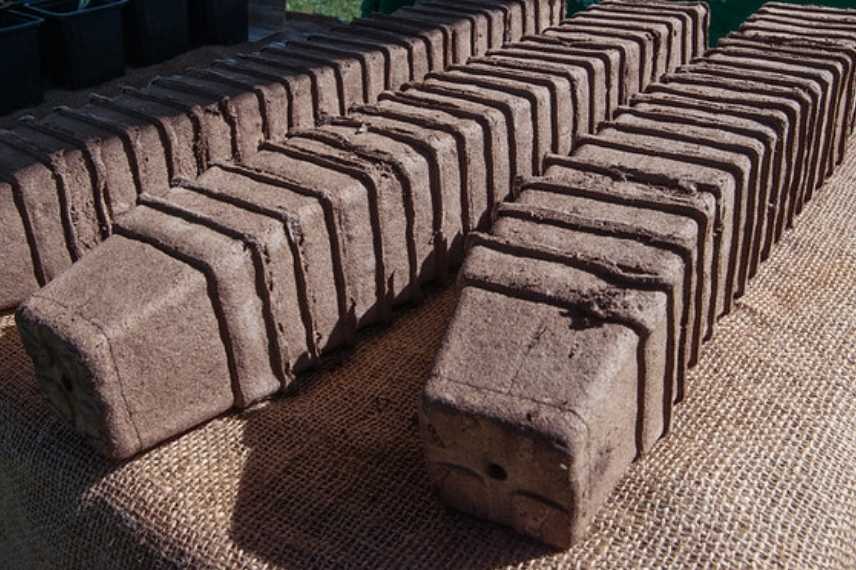
Biodegradable turf pots
Other types of containers
Metal
It’s modern and quite stylish (depending on taste, of course…)! Zinc pots, the metal most commonly used for containers, are starting to appear in gardens, especially those with a very contemporary feel. They are durable and lightweight. But they offer little insulation and are not always drilled for drainage. So be cautious! Alternatively, use this type of container only as a cover pot.
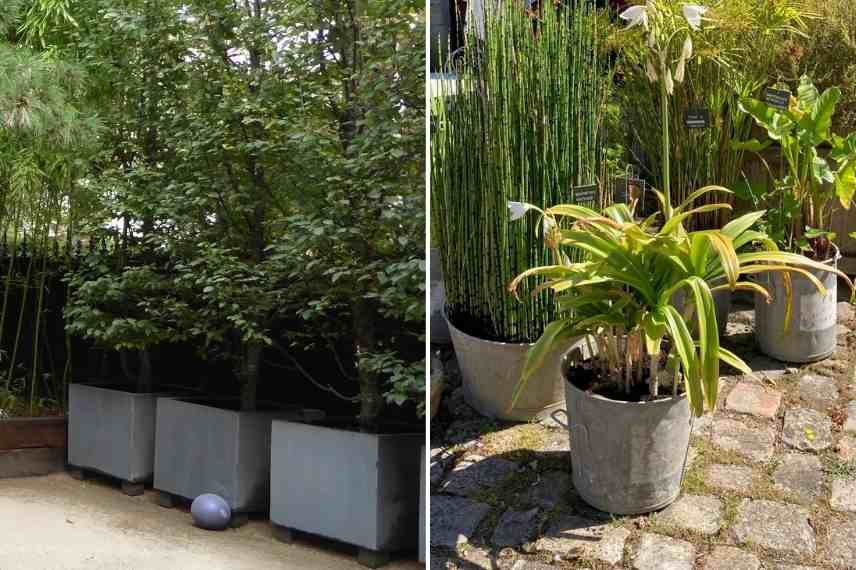
Modern appearance of large metal tubs, and a more vintage look with old tubs and zinc wash-tubs (Photos: Gwenaëlle David)
Wood
Wood can also be used to make containers for plants. They are very sturdy and frost-resistant, and are also a good thermal insulator for roots in winter. Downside is wood can rot in contact with soil and moisture. To prevent this, you can treat wood with natural products (linseed oil for example), line the inside with a waterproof liner and raise the wooden container to prevent it touching the soil (or, if necessary, place it on a bed of gravel).
Wood is mainly used for large containers: pots for bushes, planting tubs or large planters.
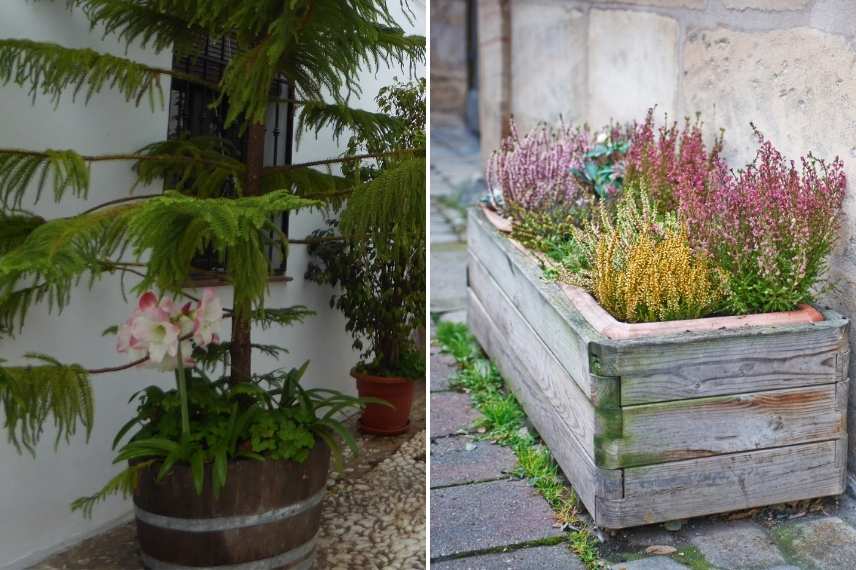
Barrels used as large tubs, provided they are lined with a protective liner (Photo: Gwenaëlle David); rectangular pine tub
Concrete and reconstituted stone
This type of container fits into any garden, whether contemporary or very natural in style. They are as sturdy as they are heavy and some are even frost-resistant (be sure to buy good quality!). They are nevertheless fairly expensive and suffer from poor root aeration. Available in all styles and shapes, concrete pots are making a strong entrance into the gardening world.
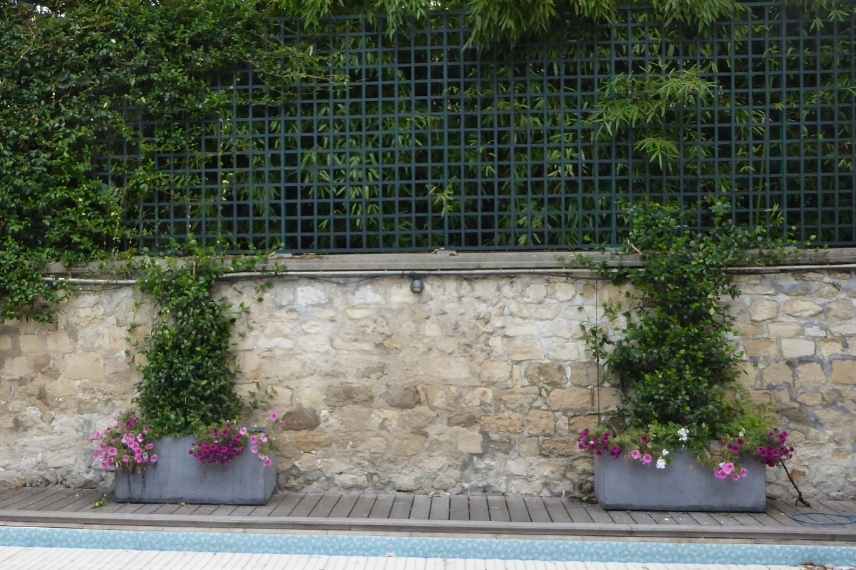
Photo Gwenaëlle David
Geotextile
It’s very recent! You can now find geotextile pots made from recycled materials. These containers help retain heat in winter and keep the rootball cool in summer; roots are well aerated and drainage is perfect. Also, they are machine-washable!
- Subscribe!
- Contents
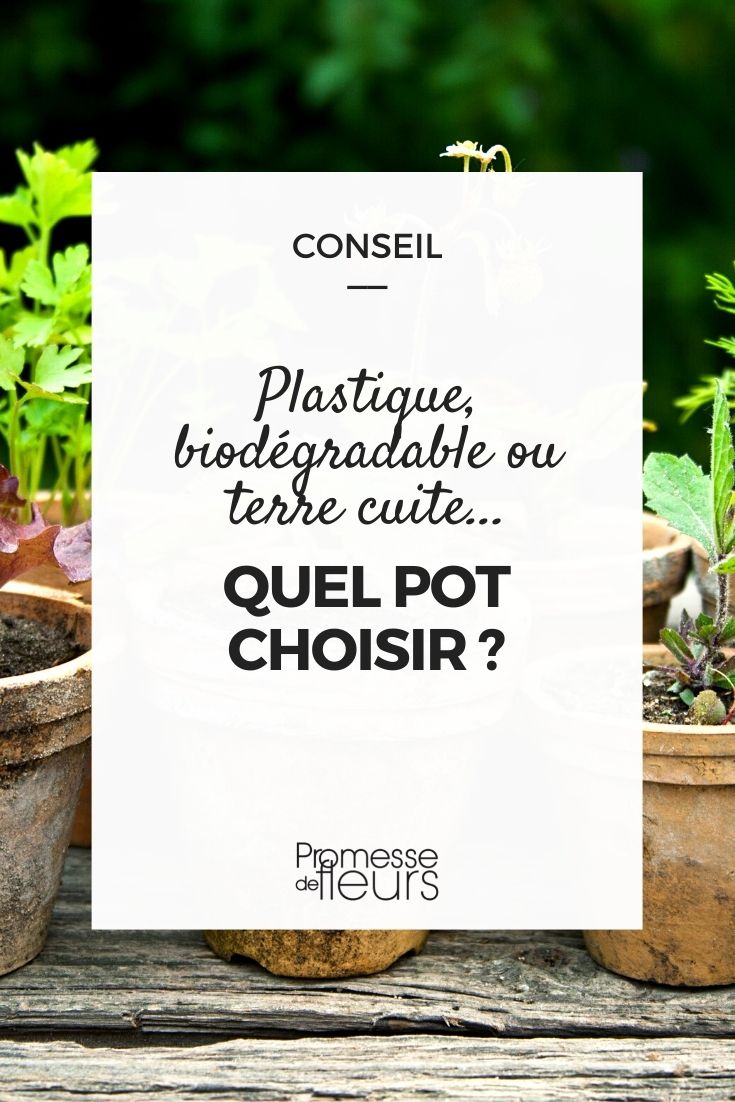































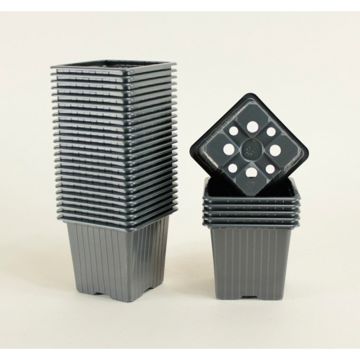
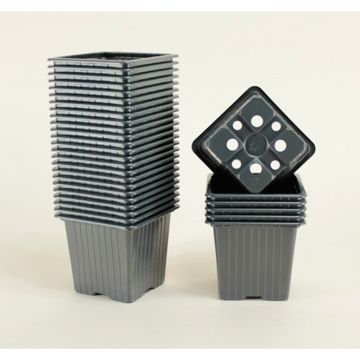
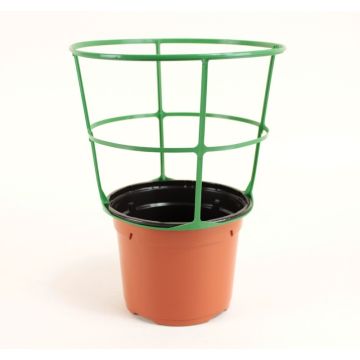
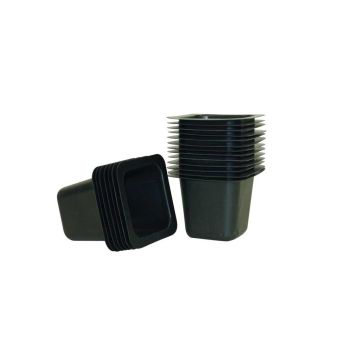
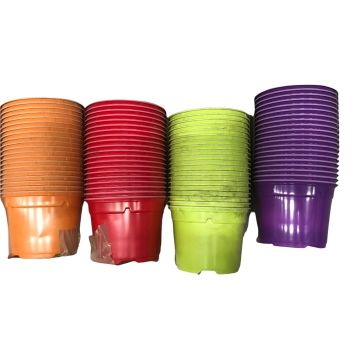
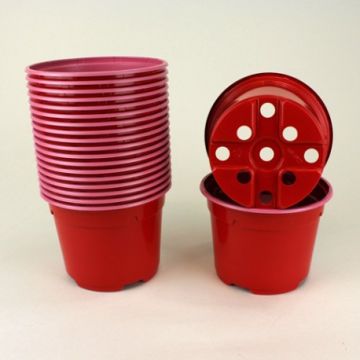
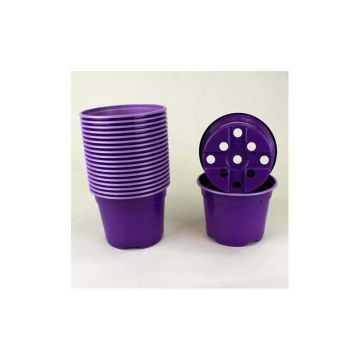
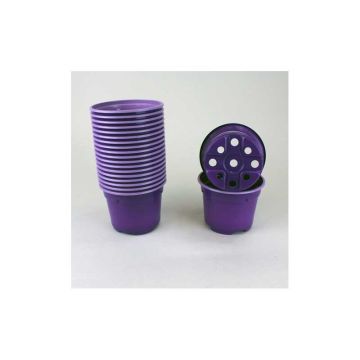
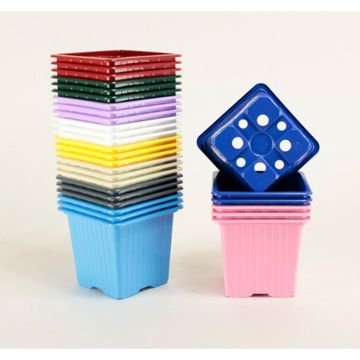
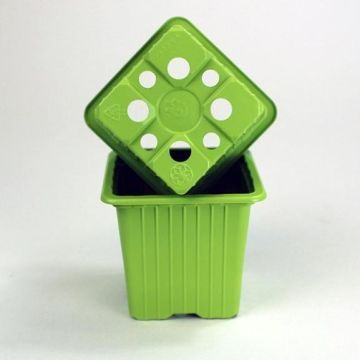
Comments